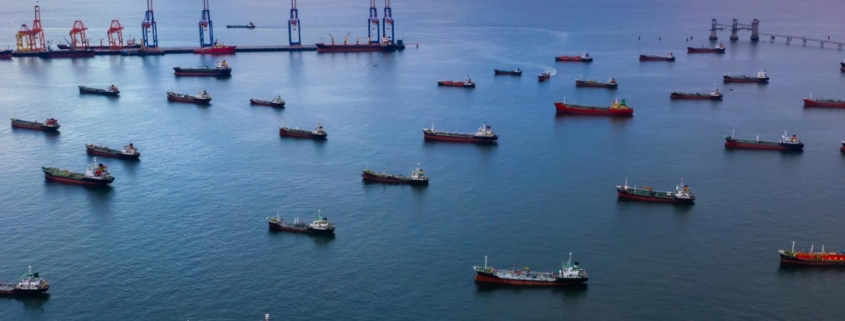How Tsunamis Impact Port Operations—and How Ports Prepare for Them
How Tsunamis Impact Port Operations—and How Ports Prepare for Them
Tsunamis represent one of the most devastating natural threats to maritime ports. Although infrequent, their impact can be catastrophic, resulting in the destruction of infrastructure, prolonged operational disruptions, and multimillion-euro losses. Understanding how tsunamis affect ports—and how port facilities prepare for them—is crucial to ensuring operational and logistical resilience.
The Impact of a Tsunami on a Port: Physical Damage and Logistical Disruption
- Extreme currents and destructive surges: Even 1–2 m of fast-moving water can damage mechanical structures and dislodge ships. Wharves are especially vulnerable due to lateral forces that can rip vessels from their moorings or break pilings.
- Tōhoku Case (Japan, 2011): The tsunami flooded several ports along the eastern coast, destroyed port infrastructure, and left facilities only partially operational for weeks. Exports/imports fell by 57.5% and 61.6% in the first quarter after the disaster.
- Chennai Port (India, 2004 tsunami): Suffered $129.6 million in damages, operations were suspended for two days, 250,000 tons of containers were lost, and 15 vessels were impacted.
- Global studies estimate that a Manila Trench–type tsunami could damage up to 11 ports today, or 15 by 2100. Closures of over 200 days are possible, affecting critical nodes like Hong Kong or Kaohsiung.
How Are Ports Preparing for Tsunamis?
a) Structural Planning and Risk Assessment
- Use of fragility functions to quantify damage probabilities based on flood depths, such as those developed for 5,000 structures during the Tōhoku tsunami.
- Conducting early-stage analyses such as HAZID/HAZOP, FMEA, or QRA to identify critical failure points.
b) Evacuation Protocols and Early Warning Systems
- Predefined ship evacuation plans, including exit routes to open sea when needed.
- Alert devices integrated with the maritime community: clear communication channels between shipowners, authorities, and port operators.
c) Recovery and Operational Resilience
- Development of post-tsunami recovery guidelines, including dock inspections, debris removal, infrastructure restoration, and user communication.
- Prioritized restoration of critical areas to resume operations as quickly as possible.
What These Risks Mean for Port Logistics
- Disruption of maritime traffic: Ports may remain closed for weeks or months, causing route diversions, reliability issues, and increased costs.
- Cascading effects on global trade, especially in key ports—a prolonged closure at a central hub can impact the entire maritime trade system.
- Direct costs and structural collapse: Damage to cranes, warehouses, and docks; risk of soil liquefaction and sedimentation. For example, in Chennai, the channel deepened but also became unstable.
Real-World Examples of Impact and Response
|
Port |
Tsunami Event | Damage and Effects | Preparedness / Response |
| Sendai & Tōhoku (Japan) | 2011, 9.0 Mw | Multiple ports destroyed; ~60% trade drop | Reconstruction, structural assessment, functional fragility analysis |
| Chennai (India) | 2004 tsunami | $130M damage, two-day shutdown, cargo loss | Coastal defense plans (artificial barrier), bathymetric study |
| Meulaboh (Indonesia) | 2004 tsunami | Terminal destroyed, collapsed access, logistics dependency | Island logistics coordination, humanitarian emergency response |
| Malé (Maldives) | 2004 tsunami | Loss of connectivity and comms, isolated distribution | Alternative network development, digital resilience |
Tsunamis are rare but devastating events for port and global logistics operations. Preparing for them requires more than just strengthening physical structures. It demands robust operational systems, clear protocols, early detection tools, and efficient recovery plans. With the right technology and strategic foresight, ports can turn this challenge into a showcase of operational resilience.



